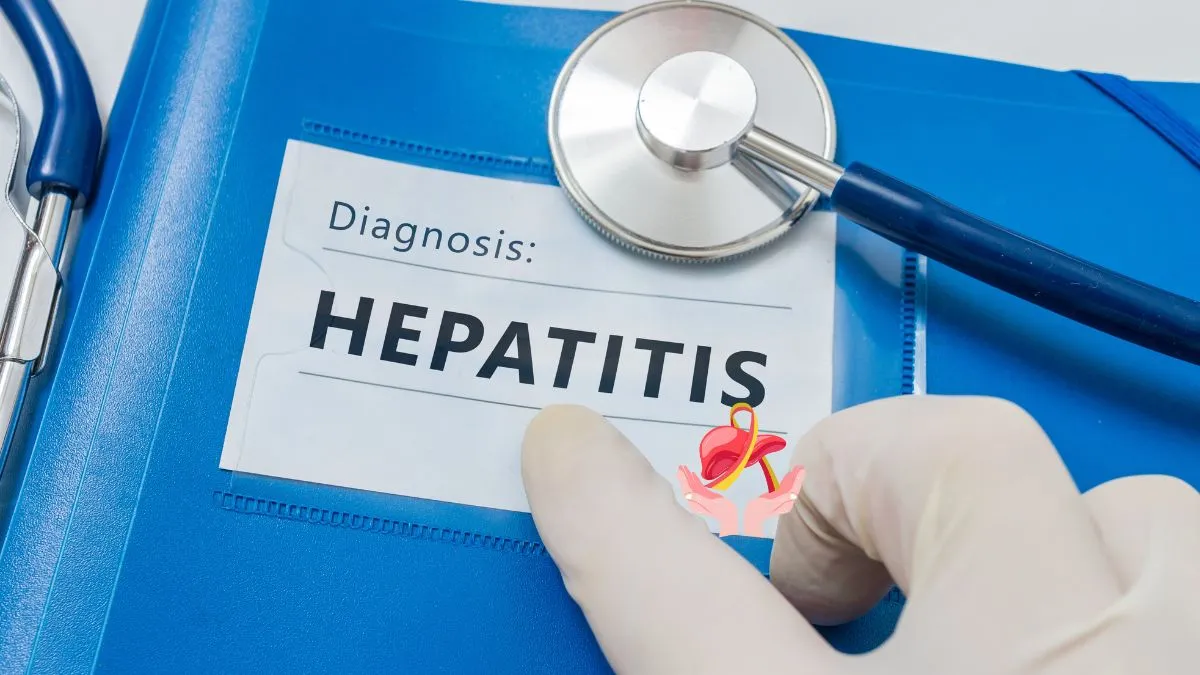- By Priyanka Munshi
- Tue, 30 Jul 2024 06:29 PM (IST)
- Source:JND
Understanding hepatitis is critical, as this class of infectious disorders can seriously harm the liver, potentially leading to cirrhosis, liver cancer, and even death. There are various types of hepatitis, including A, B, C, D, and E, each with unique symptoms, treatments, and modes of transmission.
Knowing how these viruses are spread—through contaminated food or water, blood-to-blood contact, or sexual contact—can help prevent infection. Symptoms can range from minor flu-like signs to severe liver failure. Being aware of them can facilitate early diagnosis and treatment, increasing recovery chances and lowering the risk of complications.
Additionally, recognizing the importance of immunizations—particularly against hepatitis A and B—can protect people from outbreaks and safeguard communities. Education on these diseases is essential for maintaining both personal and public health, as broad awareness is vital for controlling and preventing the spread of hepatitis.
In a conversation with Jagran English Dr. Sarathchandra Gorantla, who is a consultant gastroenterologist, hepatologist, and advanced therapeutic endoscopist at Yashoda Hospitals in Hyderabad, we discussed the symptoms, treatments, and preventative measures associated with the various types of hepatitis.
According to Dr. Sarathchandra, hepatitis, an inflammation of the liver, is primarily caused by five different viruses: hepatitis A, B, C, D, and E. Each type has unique modes of transmission, symptoms, and prevention strategies, making it essential to understand their distinctions for effective management and control.
Hepatitis A (HAV)
Transmission: Hepatitis A is typically spread through ingestion of contaminated food or water, often in areas with poor sanitation.
Symptoms: Common symptoms include fever, fatigue, loss of appetite, nausea, abdominal discomfort, dark urine, and jaundice.
Treatment And Prevention: There is no specific treatment for hepatitis A, but most individuals recover fully with supportive care. Vaccination is highly effective in preventing HAV infection, and maintaining good hygiene practices, such as handwashing, is crucial.
Also Read: 5 Simple Ways To Get Rid Of Double Chin Easily | Tongue Stretch To Straight Jaw Jut
Hepatitis B (HBV)
Transmission: HBV is transmitted through contact with infectious body fluids, including blood, semen, and vaginal fluids. It can also be passed from mother to child during childbirth.
Symptoms: Symptoms range from mild to severe and include fever, fatigue, loss of appetite, nausea, vomiting, abdominal pain, dark urine, and jaundice.
Treatment And Prevention: Chronic HBV can be managed with antiviral medications to reduce liver damage. Vaccination is the most effective prevention method, and practicing safe sex and avoiding sharing needles are essential preventive measures.
Hepatitis C (HCV)
Transmission: HCV is primarily spread through blood-to-blood contact, often via sharing needles or other drug-related equipment.
Symptoms: Many individuals with HCV are asymptomatic, but symptoms can include fatigue, fever, muscle aches, and jaundice.
Treatment And Prevention: Antiviral medications can cure over 95% of HCV infections, significantly reducing the risk of complications. There is no vaccine for HCV, so prevention focuses on avoiding exposure to contaminated blood.
Hepatitis D (HDV)
Transmission: HDV only occurs in individuals already infected with HBV and is transmitted through contact with infected blood.
Symptoms: Symptoms are similar to those of HBV but can be more severe.
Treatment And Prevention: There is no specific treatment for HDV, but managing HBV effectively can prevent HDV infection. Vaccination against HBV also prevents HDV.
Alsio Read: Cold Or Hot Therapy: Which Is More Effective To Get Relief From Shoulder Strains?
Hepatitis E (HEV)
Transmission: HEV is typically transmitted through ingestion of contaminated water, particularly in regions with poor sanitation.
Symptoms: Symptoms include mild fever, fatigue, loss of appetite, nausea, vomiting, abdominal pain, jaundice, and dark urine.
Treatment And Prevention: HEV usually resolves on its own without specific treatment. Preventive measures include ensuring access to clean water and proper sanitation. A vaccine exists but is not widely available.
What Are The General Prevention Strategies To Prevent Hepatitis?
- Vaccination: Vaccines are available for HAV and HBV, which also indirectly prevent HDV.
- Hygiene: Regular handwashing, especially after using the bathroom and before eating, is crucial.
- Safe Practices: Avoid sharing needles, practice safe sex, and ensure the use of sterile equipment for tattoos and piercings.
- Sanitation: Ensure access to clean water and proper sanitation to prevent HAV and HEV.
Dr. Sarathchandra emphasized that understanding the different types of hepatitis, their symptoms, treatments, and prevention strategies is vital for controlling the spread of these infections and protecting liver health. Public health measures, including vaccination and education, play a crucial role in reducing the global burden of hepatitis.

